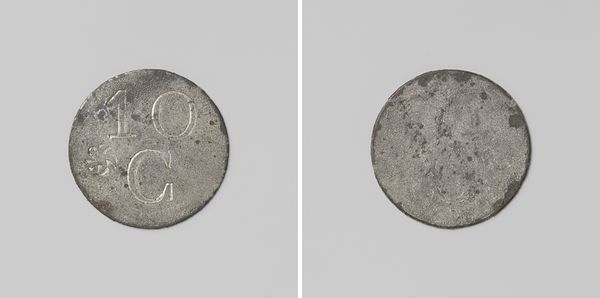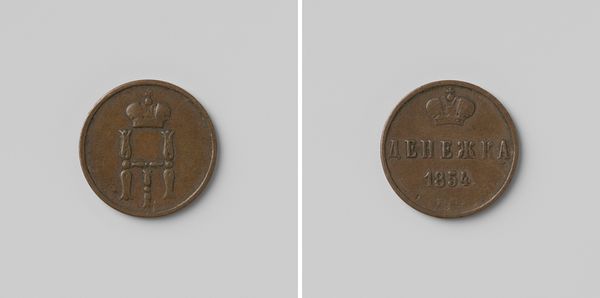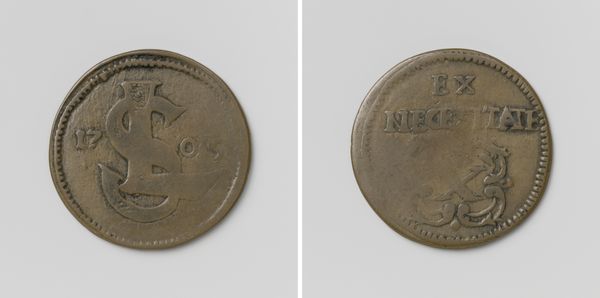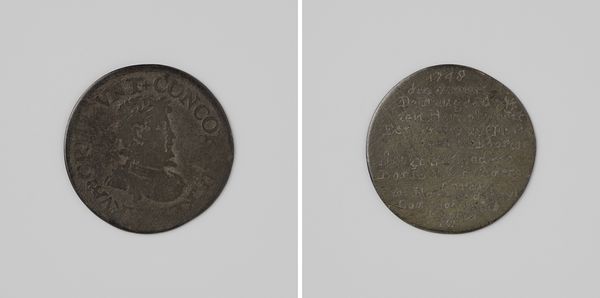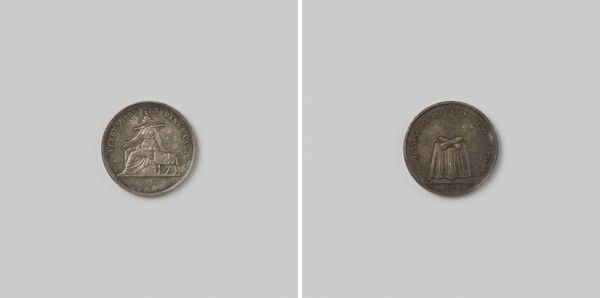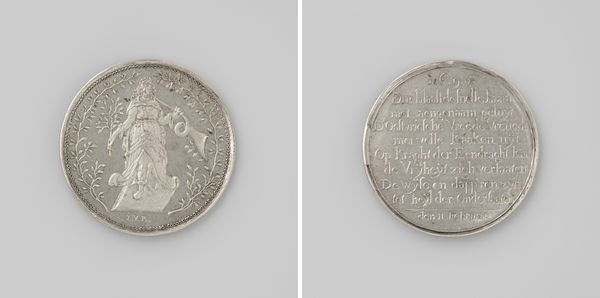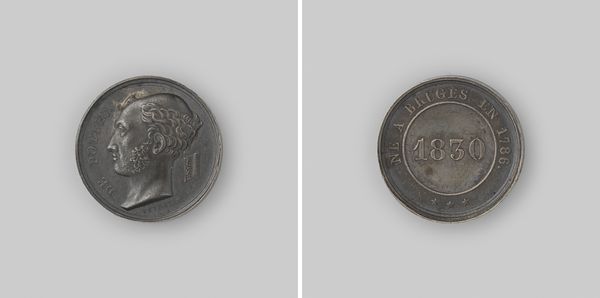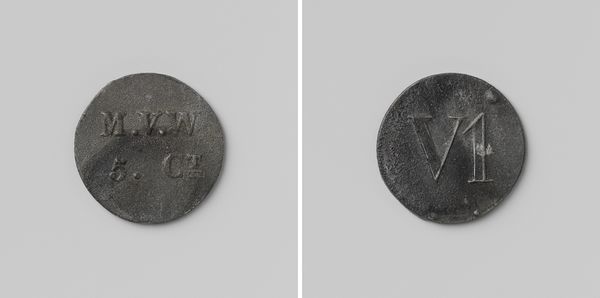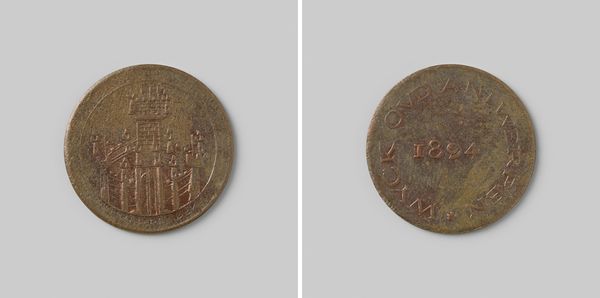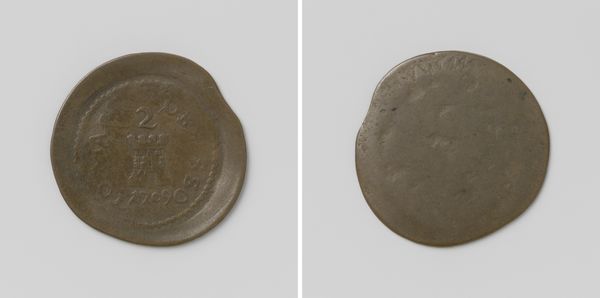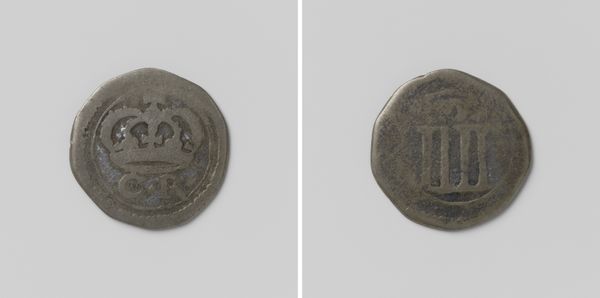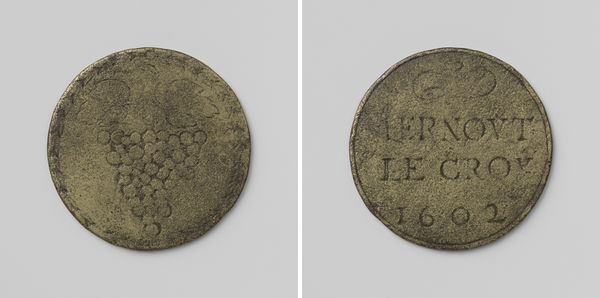
Rijksgestichten Ommerschans en Veenhuizen, huismunt geslagen op last van de Maatschappij van Weldadigheid ter waarde van tien cent 1848
0:00
0:00
print, metal, photography
#
portrait
# print
#
metal
#
photography
Dimensions: diameter 2.6 cm, weight 3.24 gr
Copyright: Rijks Museum: Open Domain
This small metal coin was produced anonymously, on the order of the Society of Benevolence. It was used in two of their ‘penal colonies’: Ommerschans and Veenhuizen. In the early 1800s, the Netherlands faced widespread poverty. The Society of Benevolence was established as a private initiative that aimed to combat this poverty through a radical form of social engineering. The poor were offered the ‘opportunity’ to work in agricultural colonies. In reality, they were subjected to a strict regime of forced labour. To complete the illusion, these colonies had their own currency, like this coin, valid only within the colony’s borders. This was a powerful way to control the inmates, restricting their freedom and reinforcing their dependence on the institution. Understanding the function of this object requires us to do some digging in the archives of social and institutional history. From there, we can better grasp its value as a historical document. The Rijksmuseum holds those archives. Only then can we understand the complex and often contradictory ways in which institutions shape and reflect the societies they serve.
Comments
No comments
Be the first to comment and join the conversation on the ultimate creative platform.
